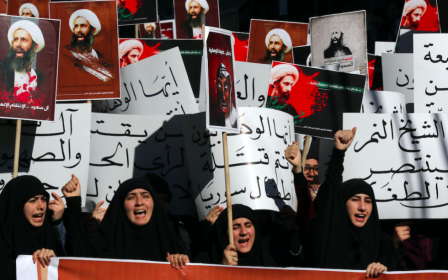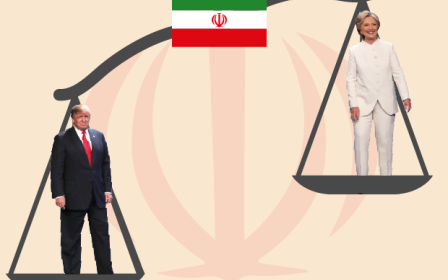The rise of nationalist fervour in Iran

On 28 October, tens of thousands of Iranians from various parts of the country gathered at the site of the tomb of King Cyrus (Kourosh in Persian) the Great in Shiraz’s Pasargadae, some 800 kilometres south of Tehran, to celebrate the day commonly known as his birthday.
While the occasion is not inscribed in the country’s official calendar, it has soared in popularity and grown exponentially in terms of participants over the last few years.
Cyrus the Great was the founder of the Achaemenid Empire and reigned from 559 BC to 530 BC. According to several historians, he created the largest empire the world had yet seen.
Last month, a copy of an official letter banning travel to the Pasargadae was circulated on social networks. Despite this, members of nationalist networks encouraged each other to take part in the gathering to display that no measures would stop them from expressing their views and sentiments.
Videos and pictures of the gathering dominated Iran’s cyberspace. Videos showed participants chanting, “Iran is our country, Cyrus is our father.” Others chanted against the ruling system, with some expressing support for the Pahlavi dynasty that ruled Iran before 1979. That year, the Shah, Mohammad Reza Pahlavi, was dethroned by the Iranian Revolution.
According to Fars Province prosecutor Ali Salehi, the organisers of the gathering were arrested and charged with spreading “norm-breaking and anti-values” slogans that were chanted during the gathering.
Grand Ayatollah Nouri Hamedani, a Shia Marja-i Taqlid (source of emulation) remarked: “These people are against the revolution. I wonder how they can gather around Cyrus's tomb and chant the same slogans [praising Cyrus] that we chant about our supreme leader. Who has failed in performing his duty by allowing these people to gather together?”
Nationalism emerges
Under the secular rule of the Shah, vast propaganda empowered nationalist fervour. In a glaring move, the Islamic calendar was substituted with the Iranian royal calendar in 1976. The origin of the Iranian calendar, which began with the migration (hijrah) of the Prophet Muhammad from Mecca to Medina, was changed to the day of the coronation of Cyrus the Great.
Ayatollah Ruhollah Khomeini, the leader of the Iranian Revolution who was then in exile in Najaf, Iraq, labelled the use of that calendar haram (forbidden by Islamic law) and a “preamble to the elimination of Islam” in a fierce statement.
Like many other pious Muslims, Ayatollah Khomeini, the founder of the Islamic Republic of Iran, viewed the concept of nationalism as un-Islamic. He thought nationalism was in opposition to the concept of ummah (Muslim worldwide community), which fundamentally rejects borders that divide Muslim societies. He asserted that “nationalism is designed by the plotters to create discord among the Muslims and it is being propagated by the agents of imperialism.”
Ayatollah Khomeini further remarked that “the plan of the great powers and their affiliates in the Muslim countries is to separate and divide the various strata of Muslims, whom God, the Blessed and Exalted, has declared brothers. … Those who, in the name of nationalism, factionalism, etc., create schism and disunity among Muslims are armies of Satan, opponents of the Holy Quran, and helping agents of the superpowers.”
Additionally, the conservatives view nationalism – essentially a secular movement that advocates separation of state and religion – as a serious threat to the foundation of the state’s ideology, which is based on the guardianship of the Islamic jurists. During the 28 October gathering, one of the slogans chanted was “freedom of thought cannot take place with beards,” a reference to the figures in power.
'The school of Iran'
Iranian nationalists glorify Iran’s pre-Islamic civilisation and reject an Islamic system, though not necessarily Islam. They strongly feel that Iranians were humiliated as a result of the Arab-Muslim conquest of Iran, which led to the collapse of the Iranian Sassanid Empire in the 7th Century.
Among the faction of radical nationalists, anti-Arab sentiments are particularly intense. The conservatives and elite that dominate the establishment view this as troubling because Prophet Mohammad was an Arab, the Quran is in Arabic, and Shia Imams were of Arab descent.
An unprecedented version of nationalism emerged under the presidency of Mahmoud Ahmadinejad from 2005 to 2013. He began to advocate religious nationalism, promoting Iranian-Islamic identity as a new discourse.
In 2010, the combative president began stressing nationalistic Iranian themes in an attempt to carve out a new political constituency among those who identified with their religious tendency, be it conservative or reformist.
Ahmadinejad’s chief of staff, Esfandiar Rahim-Mashaei, put forth a discourse that provoked an uproar. Rahim-Mashaei was also said to be Ahmadinejad’s religious mentor. In a speech in 2010, Rahim-Mashaei said: “There are different interpretations of Islam, but our understanding of the real nature of Iran and of Islam is the Iranian school. From now on, we must present to the world the school of Iran.”
He went on to say that “without Iran, Islam would be lost,” and added, “if we want to present the truth of Islam to the world, we should raise the Iranian flag".
Mashaei was attacked by conservatives from every corner, but Ahmadinejad defended him and blamed the critics for not understanding the depth of Mashaei’s thoughts and views.
An opportunity for opposition
Since Ahmadinejad left office in 2013, the idea of religious nationalism has not been promoted or advocated by any group, although this does not mean that the ideology is dead.
The gathering under the banner of King Cyrus during the Great Day has thus far presented an opportunity for the domestic opposition and dissent to express their protest to the ruling system. It is noteworthy that neither the police nor security forces appeared on the scene to disperse the crowd.
More notably, unlike the typical situation where pro-government plainclothes groups physically confront demonstrators at gatherings, they were not present during the 28 October demonstration.
However, as the movement gains momentum and becomes larger every year, and the slogans towards the establishment become more hostile and threatening, it is likely that at some point the riot police will become involved and prevent gatherings from happening.
Whether this measure would be faced peacefully by the demonstrators or lead to clashes similar to the protests in the aftermath of the 2009 disputed presidential election remains to be seen.
- Shahir Shahidsaless is an Iranian-Canadian political analyst and freelance journalist writing about Iranian domestic and foreign affairs, the Middle East, and the US foreign policy in the region. He is the co-author of Iran and the United States: An Insider’s View on the Failed Past and the Road to Peace. He is a contributor to several websites with focus on the Middle East as well as the Huffington Post. He also regularly writes for BBC Persian. He tweets @SShahisaless.
The views expressed in this article belong to the author and do not necessarily reflect the editorial policy of Middle East Eye.
Photo: An image shared widely on social media of the 28 October celebrations in Shiraz's Pasargadae, about 800km south of Tehran.
Middle East Eye propose une couverture et une analyse indépendantes et incomparables du Moyen-Orient, de l’Afrique du Nord et d’autres régions du monde. Pour en savoir plus sur la reprise de ce contenu et les frais qui s’appliquent, veuillez remplir ce formulaire [en anglais]. Pour en savoir plus sur MEE, cliquez ici [en anglais].





